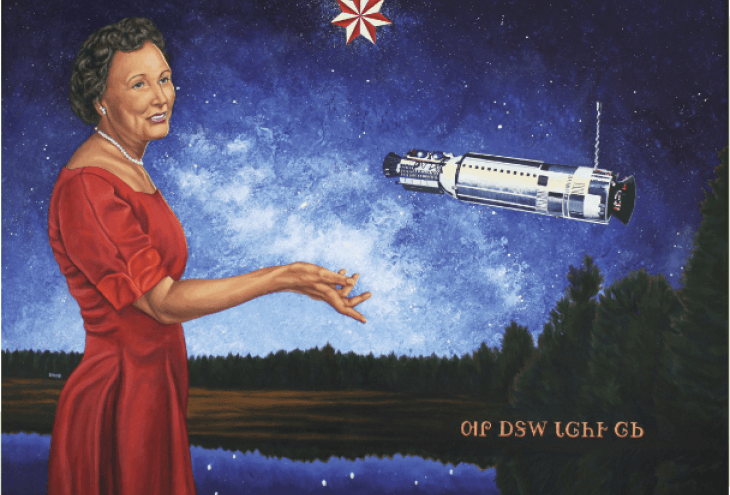Mary Golda Ross could have starred in her own motion picture about rocket scientists of color. Ross, Cherokee, is best known for her work as one of the country’s original rocket scientists, but her role was so well hidden that in 1958 she easily stumped the celebrity panelists on the popular TV game show What’s My Line?
Ross was born in 1908, just one year after her native Oklahoma became a state. She obtained a bachelor’s degree in 1928 from Northeastern State Teachers College in Tahlequah, which had been founded by her great-great-grandfather Chief John Ross. She taught math and science for nine years in public schools, then went on to earn a master’s in math from Colorado State College of Education.
But in 1942 destiny — and a new career — took Ross farther west, to Lockheed Aircraft Corporation. She initially did research for the P-38 fighter plane, after which Lockheed sent her for advanced aeronautical engineering training and made her the company’s first woman engineer.
Ross was part of a team of 40 engineers that founded the Lockheed “Skunk Works,” a secret think tank that developed ballistic missiles, satellites, and the first successfully launched rocket, the Agena. She was the only woman — and the only Native — in the Skunk Works, which is still in existence. “Often at night there were four of us working until 11 p.m.,” Ross recalled in a 1994 interview with the San Jose Mercury News. “I was the pencil pusher, doing a lot of research. My state-of-the-art tools were a slide rule and a Frieden computer.”
Because Lockheed was a major NASA contractor, Ross’s work contributed to the U.S. space program. Ross was one of the authors of NASA’s Planetary Flight Handbook Vol. 3, which laid the groundwork for the next four decades of space travel, including the Apollo missions. After becoming the firm’s senior advanced systems staff engineer, Ross contrib - uted to the development of the Poseidon and Trident missiles.
“The best thing about being a research engineer was that you were discovering new things every day,” Ross told writer Laurel M. Sheppard during a 2002 interview for Native Peoples magazine. “I was working on designing vehicles that had never been dreamed of before — I felt immense satisfaction in this.”
Ross also became involved in AISES, and in 1984 was given a lifetime membership. In 1985, she was named winner of the Ely S. Parker Award, the organization’s highest honor. Later that year, she received the Eagle Feather award from the Council of Energy Resource Tribes, which then renamed the award for her. She was also a member — and later a fellow — of the Society of Women Engineers.
In 2004, Ross marked another milestone: wearing her first-ever traditional Cherokee dress. She asked her niece to make it so she could participate in the processional marking the opening of the aises.org FALL 2017 • WINDS OF CHANGE 37 Smithsonian’s National Museum of the American Indian.
Her death in April 2008 at age 99 was commemorated by the Cherokee Nation, and she remains an inspirational figure both for individuals and for the tribe’s education initiatives. “When America won the space race in the 1960s, Mary Golda Ross played a critical engineering role for NASA. She was a supremely talented woman who committed herself to science and the pursuit of something monumental. She is a role model for our Cherokee Nation tribal citizens, especially young girls because they can see anything is achievable through hard work and education,” says Cherokee Nation Secretary of State Chuck Hoskin Jr. “In the spirit of her success and pioneering effort, we have embraced opening more doors in STEM education opportunities. We are ready for more Cherokee women to be involved in science and math and pursue new frontiers in technology.”











